This fascinating book closely examines a crucial 15 years in the life of the long, long career of Breguet, the brand. These years are particularly important to the present-day incarnation of the marque; its modern re-founding took place just as the so-called quartz crisis that nearly killed off the Swiss watch industry was coming down.
This book is written as a type of journal, a personal account. It is a long narrative, not necessarily a professionally written novel or piece of non-fiction. It is an insider’s look at how one exceptional luxury brand was re-created in the late 1970s in Switzerland.
“Mr. Bodet has allowed his thoughts to flow freely to help us grasp, though his own story, the profound significance of time in the evolution of knowledge,” the publisher’s note explains. “These pages are filled with a sense of humility nurtured by a conviction that – as the author aptly expresses – knowledge is passed on by individuals serving as guiding lights in fostering the growth of talent.”
“All his masters are named and due tribute is paid to them, since it is so clearly true that the current renown of Breguet stems from the combined talents of all those who made it possible to perceive ‘the nostalgic sound of the soul’ in each of these watches.”
This is the unadulterated story of how the modern Breguet brand was created after the Chaumet brothers, Jacques and Pierre, acquired it in 1970 “for a modest sum.”
The author
This story is told by François Bodet, a trained jeweler from a French jeweler family. In 1972, Bodet went to work for Chaumet’s store on Paris’ swanky Place Vendôme, and just a year later he was tasked with a new shop called Les Temporelles Chaumet, which focused on the sale of watches, including some brands that were represented in France for the very first time.
The brands sold there included Audemars Piguet, Chopard, Corum, DeLaneau, Ebel, Gérald Genta, Jaeger-LeCoultre, and Rolex.
In 1975, Bodet was “given” Breguet to develop as the general manager, a duty that he performed for a while alongside leading the Chaumet Les Temporelles store. Bodet often compares Breguet to a jewel in the book, “a three-carat diamond.”
“I was going to approach Breguet from the perspective of a jeweler!” he exclaims in chapter 2, “The House of Chaumet.”
“Real jewelers do not make watches. These are two different sectors and mindsets that are largely ignorant of each other, as well as two completely independent skill sets.”
With elegance always foremost in his mind, Bodet set out to target jewelry rather than watchmaking clients for the newly re-created brand. One of the ways he made these timepieces more attractive to a cultured European at the time was to create an identification bridge between mechanical watchmaking and Parisian luxury – thus, he used Hermès straps for his Breguet watches.
Bodet’s tasks throughout his interesting career included being manager of Les Temporelles Chaumet at Plâce Vendôme (until 1983); project manager for Breguet’s re-launch; head of Chaumet’s jewelry business in Japan; and from 1983 until 1996 director, executive director, and chairman of Breguet, as appointed by Chaumet and Investcorp respectively.
Breguet’s modern history
Bodet describes the very beginning of trying to redefine a legend. And here his story actually coincides with one that our own Ian Skellern told not so very long ago about an exceptional experience he had in The Watch That Changed My Life: The Jean Daniel Nicolas Two-Minute Tourbillon By Daniel Roth.
In the chapter “The House of Breguet,” Bodet describes defining the five distinctive features of a new Breguet, with the help of watchmakers such as Daniel Roth and Louis-Maurice Caillet (who still works for Breguet!) and designer Gérald Genta.
The Reference 3050 perpetual calendar that they all created during a time when perpetual calendars were practically non-existent is something Bodet looks back on with pride. “This is how Breguet launched the fashion for complicated watches,” he says.
The brand took off, and Bodet understood the urgent need to hire more watchmakers. When the Chaumets hesitated, he even offered to use part of his own salary to this end (he didn’t end up having to).
In 1983 Breguet headed to Basel to exhibit for the first time at the world-renowned fair in a “little booth beneath the escalator.”
Prior to 1983, Bodet relates that the brand had sold 500-700 pieces, “50 percent of them through the Chaumet connection.” But by 1987, things had increased exponentially within the resurgence known as the mechanical renaissance.
It was in 1987 that Bodet and his watchmakers began to study the Breguet tourbillon, which Abraham-Louis Breguet had invented in 1795 and patented on June 26, 1801. After three years of research and development, Reference 3350 was launched in 1990, a 36 mm timepiece containing a one-minute tourbillon that was fully visible in a cutaway at 6 o’clock.
“It represented the pinnacle of Breguet’s genius and was an iconic piece for this great watchmaker and for watchmaking in general,” writes Bodet.
However, all was not peaches and cream. Like all the other watchmakers, Breguet experienced hard economic realities prior to 1987, at which time imminent bankruptcy forced Breguet into the hands of Investcorp – which saved it.
Breguet took off, sales increased between 1987 and 1993 from 1,200 to 4,700 pieces, and around this time Breguet acquired Lémania so as not to be dependent upon movement manufacturers.
And, Bodet writes, the purchase was also made so that the brand could also call itself a manufacture, “a strictly regulated title, which requires that virtually all production be undertaken by the same company.”
Breguet was sold to the Swatch Group in 1999.
The brand is “still in very good hands,” Bodet is sure. “Nicolas Hayek had unquestionable flair, and the quality and renown of this prestigious brand would serve him well.”
In his afterword Bodet writes, “One of the motivations for writing this book was the desire to pass on the tools used to engineer Breguet’s rise. In the present age of information technology, standardization, and a tendency to favor quantity to the detriment of quality, I wished to highlight the important role of human beings, of relationships, of harmonious teamwork and respect for different cultures. These are the kind of elements that should never be forgotten in all that is undertaken.”
Sizing up the writing
As I said above, this story is a narration. It was committed to paper by Françoise Favre in French language as told to her by the 72-year-old Bodet.
I feel that in the hands of a different writer this could have been a page-turning story. Or even perhaps if just a different format had been chosen to tell the story.
Still, it remains a unique and interesting narrative. And very rare in terms of the quite fascinating look into the modern re-emergence of what is now a big-name brand. Its beginnings at a time when the quartz watch was dominating and so much of the industry was going under was nothing less than captivating to read.
And it teaches us a very important lesson since its rebirth was so typical of the Swiss industry. Never to forget that at heart luxury watchmaking is a personal and cottage industry. It seems that Bodet is not sure that the polished, industrialized turn the world of luxury watches has taken is necessarily a good one, though he speaks of the brand’s current owner only in the highest tones of praise.
While the translation is solid with only a few non-essential misunderstandings, with some copyediting this text could have been so much more. Even so, I highly recommend it.
Breguet, Story of a Passion 1973 – 1987 would make the perfect gift for the horophile in your life and is available to order online at Watchprint and Amazon.
Quick Facts
Author: François Bodet as told to Françoise Favre
Photographs: 28 color illustrations and 24 black-and-white archive photos
Publisher: Watchprint
Book style: hardcover, 19 x 19 cm
Year of publication: 2015
Number of pages: 128
ISBN: 978-2-940506101
Language editions: English and French
Price: $60 / 58 Swiss francs

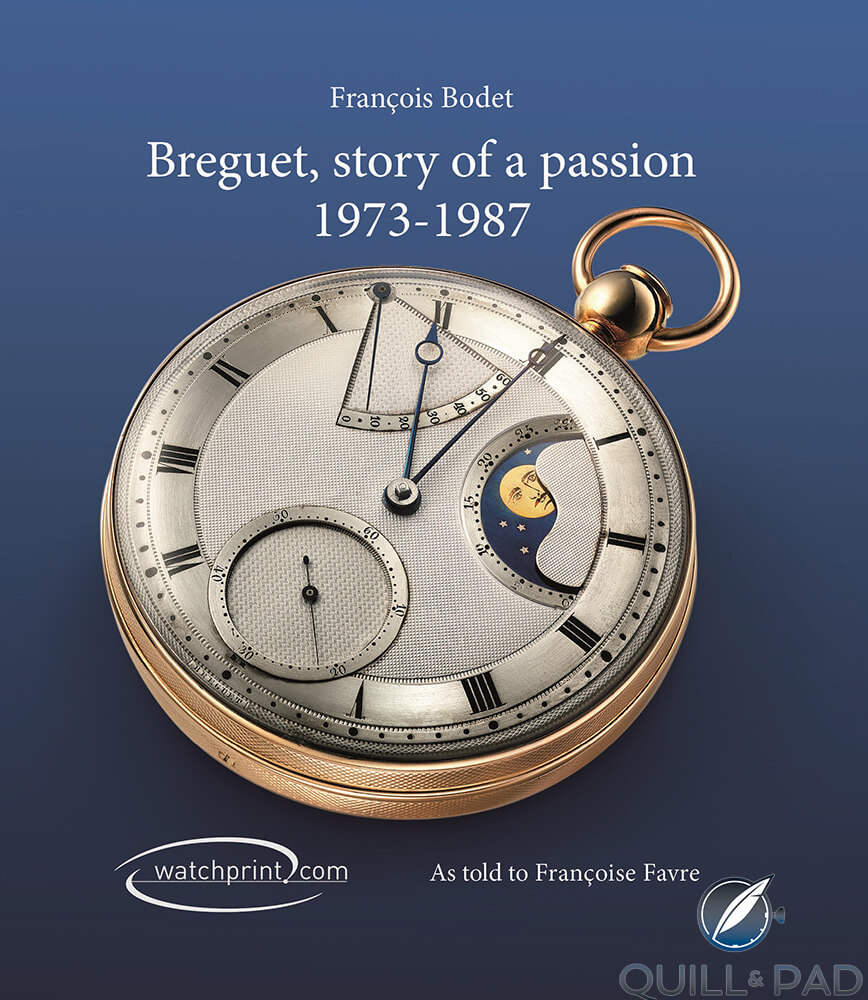
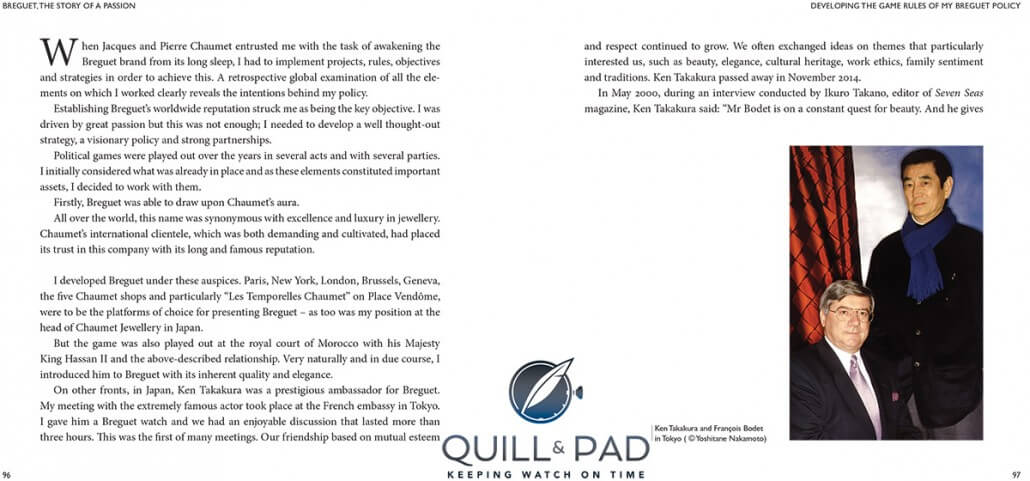

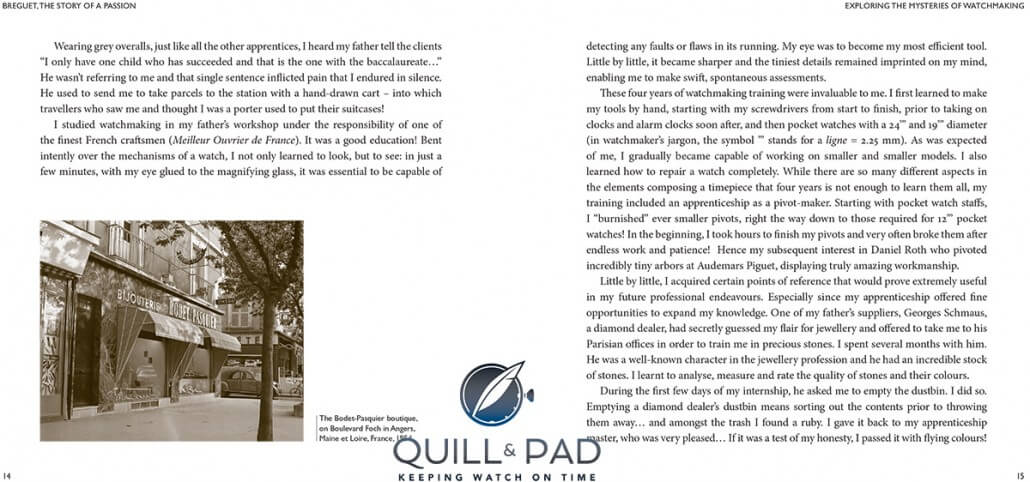
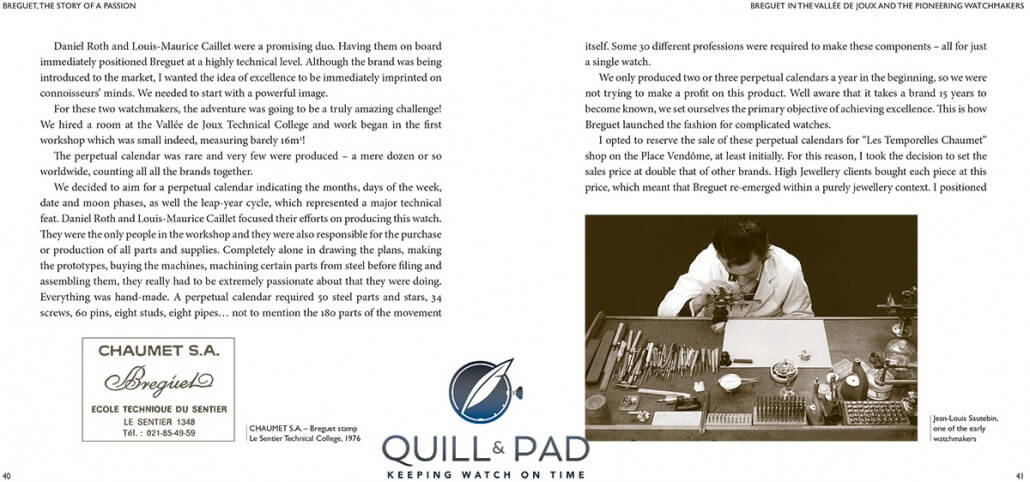
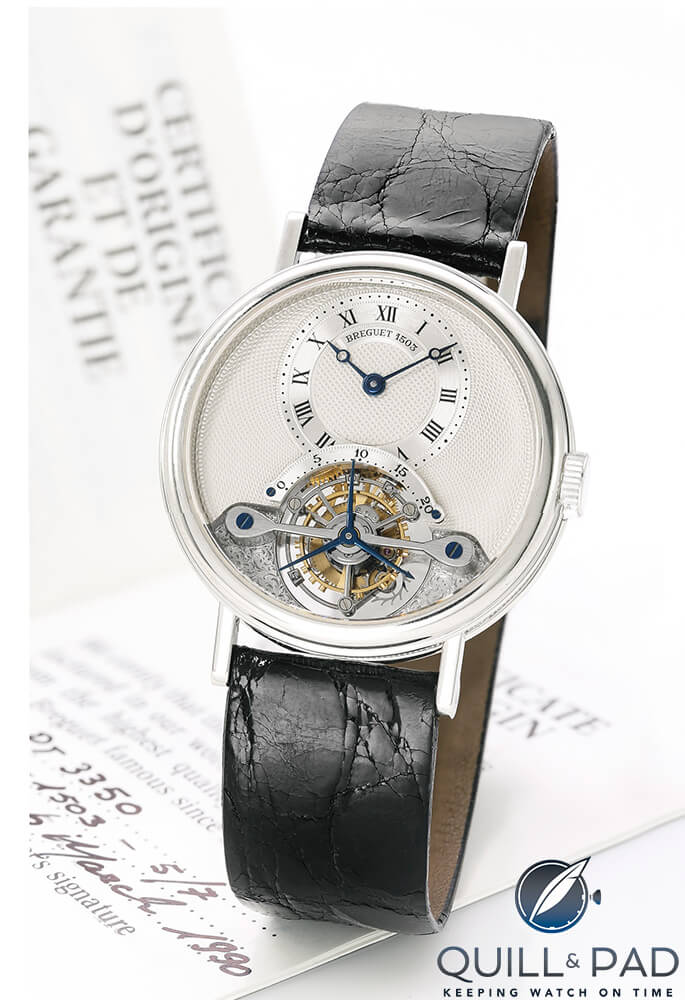
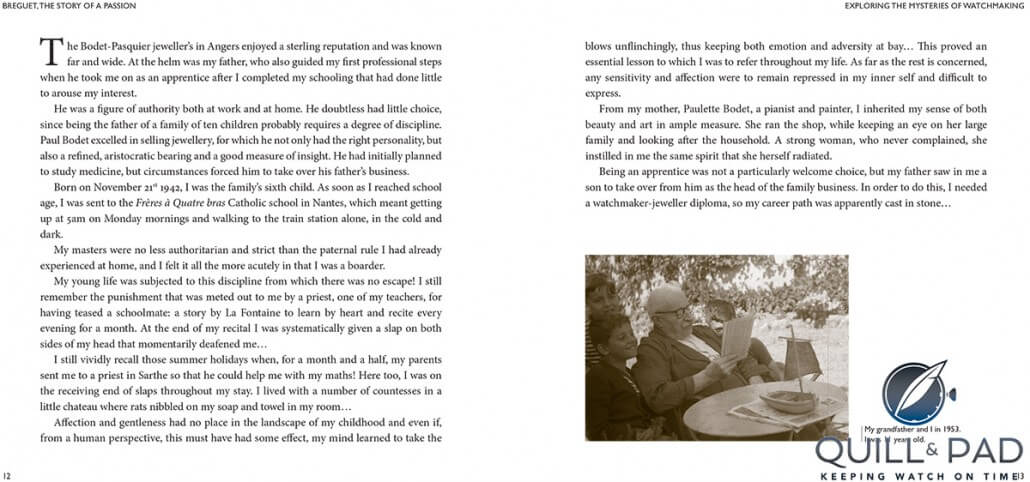
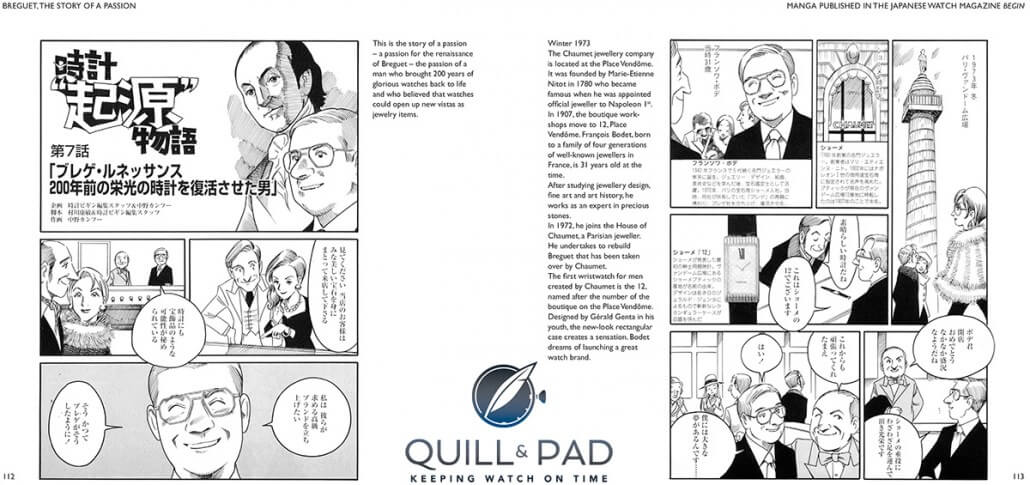
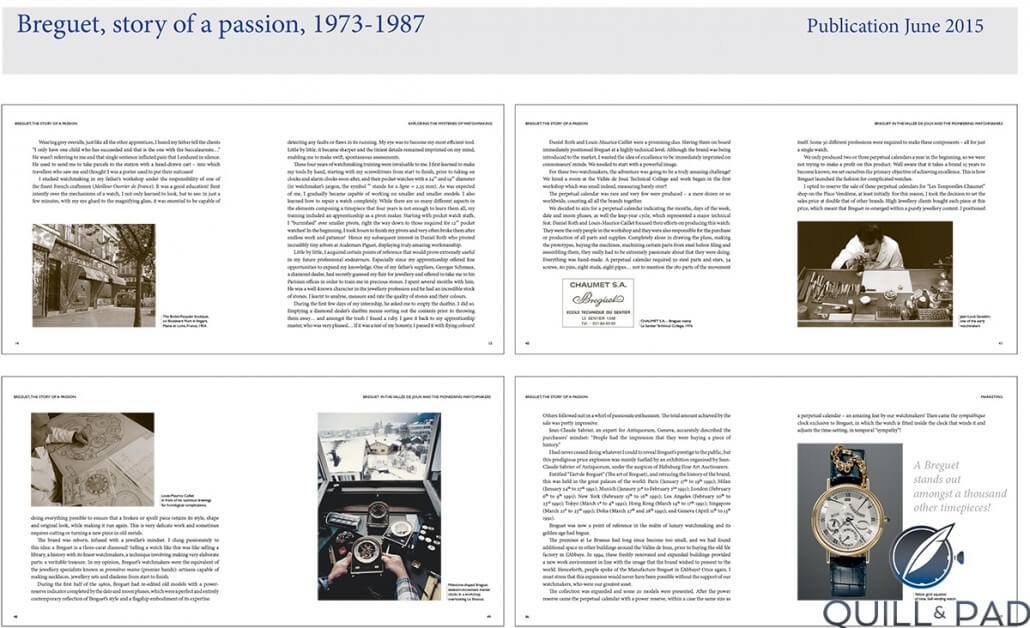
Trackbacks & Pingbacks
[…] The modern Jaquet Droz story began in 1989 when Investcorp, a Saudi-English company that already owned Breguet, Chaumet and Ebel, bought the rights to the Jaquet Droz brand name. A new line was conceived, designed, and launched by the makers of the modern Breguet brand (see Book Review: ‘Breguet, Story Of A Passion 1973-1987’). […]
Leave a Reply
Want to join the discussion?Feel free to contribute!